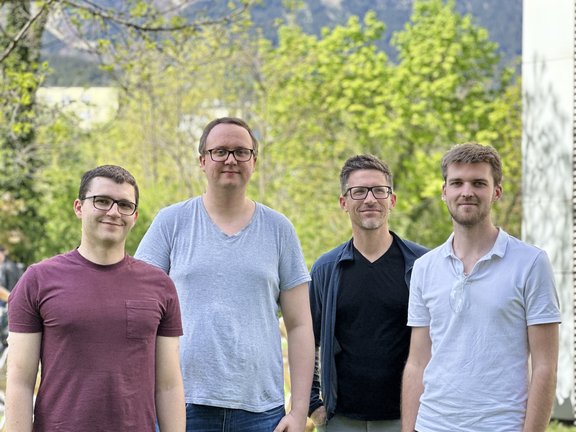Chemists led by Thomas Magauer at the University of Innsbruck succeeded in synthesizing the natural product Waixenicin A for the first time. This molecule is found in soft corals and is of great interest to the pharmaceutical industry due to its potential medical applications.
Soft corals are a rich source of bioactive natural products. The genus Xenia produces the so-called Xenia diterpenoids, which are characterized by their structural complexity and diverse biological activities. Due to their promising activities, pharmaceutical companies are also showing increasing interest in them - some Xenia diterpenoids feature anti-inflammatory and anti-cancer properties, for instance. The first representatives of these substances were isolated as early as 1977, however, they have only been studied to a limited extent.
The biggest challenge is the low availability of natural sources. Many marine organisms, including corals, are largely impossible to cultivate. Large-scale extraction of Xenia diterpenoids from corals in nature would represent an enormous impairment of their sensitive ecosystem. Several attempts to produce the complex molecular structures in the laboratory have failed, and to date only a handful syntheses of structurally simplified modifications have been described in the literature.
Inhibition of ion channel
In 2014, the group of Thomas Magauer started their research on the synthesis of Waixenicin A. The goal was to develop a flexible synthetic strategy to this natural product and to explore its mode of action as well as potential for drug development.
Waixenicin A is a unique member of the Xenia diterpenoids and was first isolated from the Hawaiian octocoral Anthelia edmondsoni at Harvard Medical School in 1984. Initial testing in 2011 revealed that Waixenicin A is a selective and highly potent inhibitor of the TRPM7 ion channel. Ion channels play an essential role in various biological processes, including neural signaling and the perception of a wide variety of sensations such as heat, taste, and pain.

The Waixenicin A team (from left): Immanuel Plangger, Christian Steinborn, Thomas Magauer, and Julian Lichtenegger
Earlier work on herbicides leads to success
Magauer's group finally succeeded in synthesizing Waixenicin A in the laboratory in April 2023. The synthesis was very challenging due to the special properties of the natural product but was finally accomplished with the help of an efficient synthetic strategy that Magauer's group had established during previous work in the area of herbicides.
Despite early progress and a significant breakthrough in 2017, the desired bicyclic scaffold was not accessible in the laboratory. The presence of several labile functional groups as well as a strained nine-membered ring prevented the successful synthesis for several years.
Eventually, a solution based on an earlier study on the synthesis of the herbicide Cornexistin.
was developed. The use of an intramolecular ring closure enabled efficient assembly of the desired molecular scaffold. Sequential functionalization of a key bicyclic intermediate allowed selective incorporation of the side chain and completed the first synthesis of Waixenicin A. Further diversification of the key intermediate provided access to two additional Xenia diterpenoids: 9-Deacetoxy-14,15-deepoxyxeniculine and Xeniafaraunol A. Particularly intriguing was the conversion to Xeniafaraunol A, which could be performed in only one step. The significance of this step for the biosynthesis and the biological activity is yet unexplored, so exciting research questions are guaranteed.
The Magauer group is currently optimizing the developed route and is working on the synthesis of a unique substance library. In collaboration with Susanna Zierler's group, the latter will be investigated for its inhibitory effect on the TRPM ion channel. Additional binding studies will provide important insights into the mode of action of this fascinating family of natural products.
The research work was published in the Journal of the American Chemical Society and financially supported by the ERC Consolidator project CRAFTMOL and the Center for Molecular Biosciences Innsbruck (CMBI).
Reference
Total Syntheses of (+)-Waixenicin A, (+)-9-Deacetoxy-14,15- deepoxyxeniculin, and (−)-Xeniafaraunol A. Christian Steinborn, Tatjana Huber, Julian Lichtenegger, Immanuel Plangger, Klaus Wurst, and Thomas Magauer. J. Am. Chem. Soc. 2022






